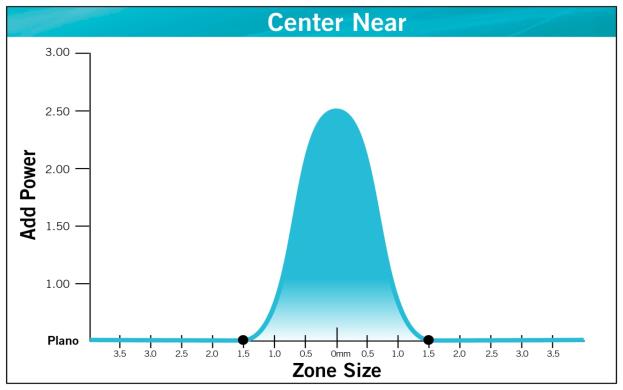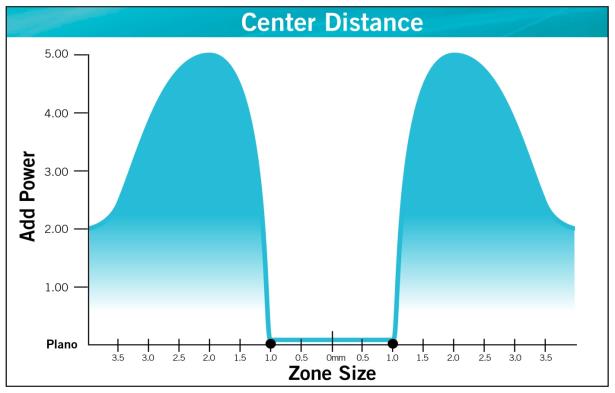
After it’s introduction in 2014, the Duette Progressive Center Near has been satisfying a lot of presbyopes.There are good arguments to choose for a center near design.
With accommodation, convergence of the eyes and pupil miosis automatically occur and the centre of the lens is in front of the pupil. The center zone has the max Add of 2,50 D that transitions within the central 3 mm, allowing multiple distances of clarity.
 When looking at distance this centre near part however can disturb distance vision, especially when the pupil sizes are smaller. This occurs generally with increasing age.
When looking at distance this centre near part however can disturb distance vision, especially when the pupil sizes are smaller. This occurs generally with increasing age.
Therefore there is also much say in favor of Centre Distance designs.
In 2018, SynergEyes® introduced the Duette Progressive Center Distance with FlexOptics™:
- This design has a variable zone width with a 1 mm transition zone where power gradually changes to achieve the max add of 5.00D.
- The Center Distance Zone size is driven by photopic pupil diameter that is measured for each eye using a special PD ruler. The final Centre Distance Zone is calculated by subtraction 1.0 mm from the individual photopic pupil size. The available zone size range is 1.8 mm.
- The idea behind the Progressive CD design with Flexoptics™ is tohave the ideal ratio between distance and near perception!

The Duette Progressive Design is driven by ADD.
Which design of Duette Progressive is determined by add power. Consider Center Distance design for emerging presbyopes needing reading add of up to +1.50 or +1.75. Center Near works very well on more advanced presbyopes needing reading add of +1.75 and above.
Note, Duette Progressives can also be fit using Center Distance in dominant eye and Center Near in non-dominant eye for some patients.

